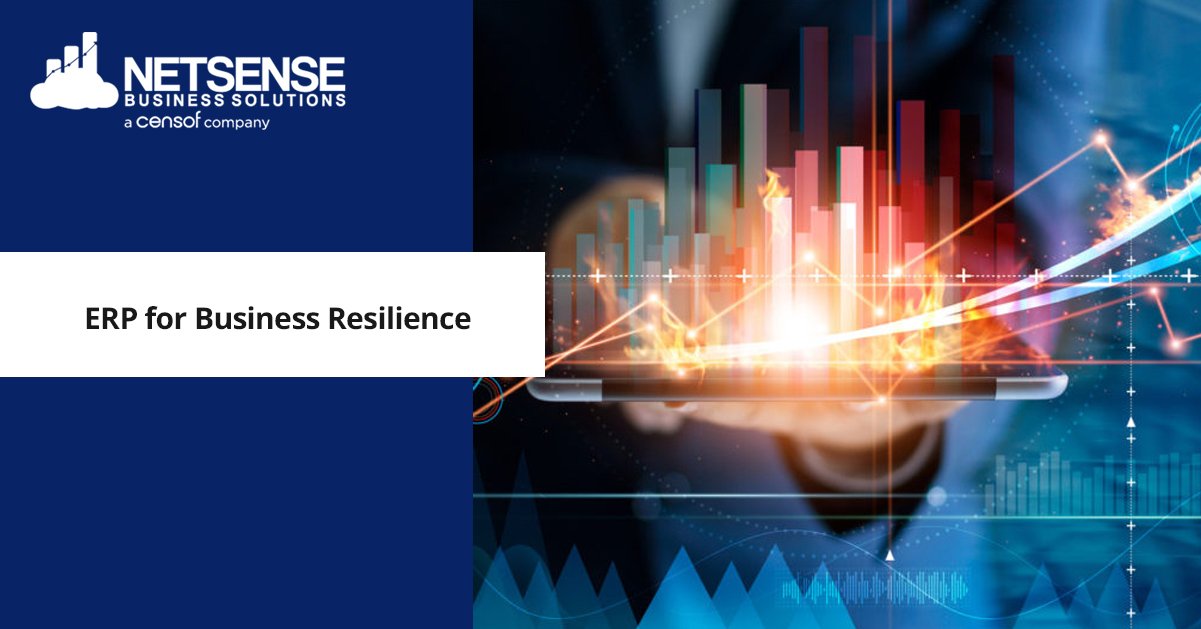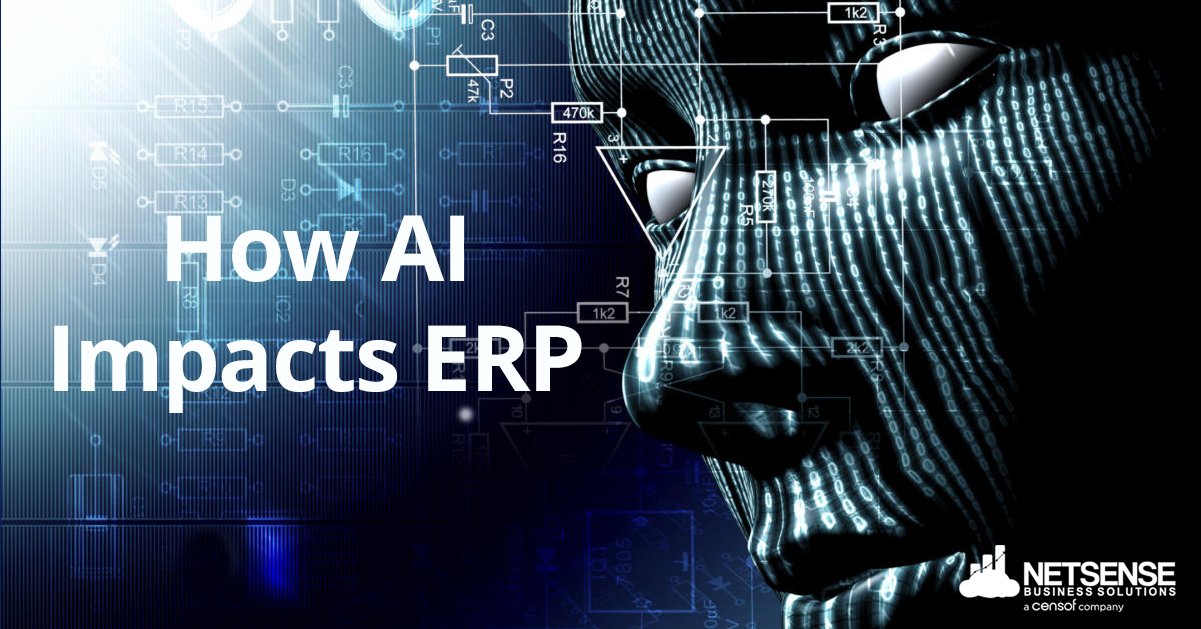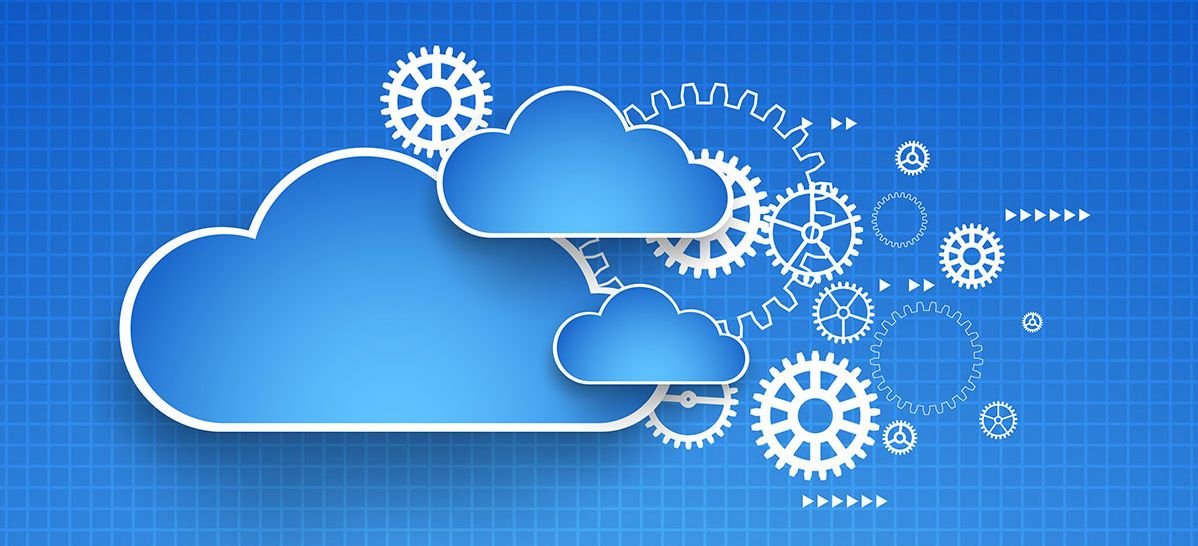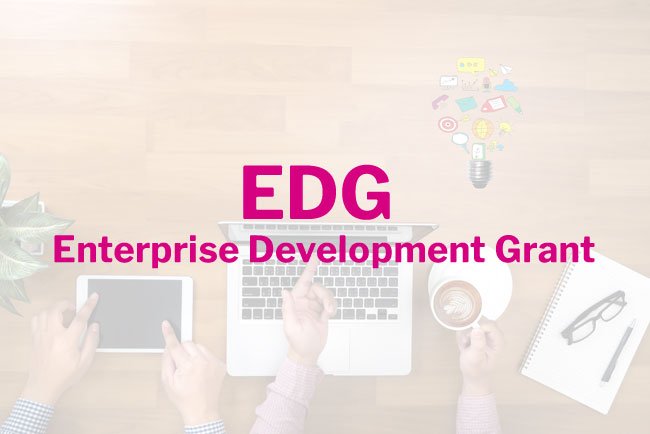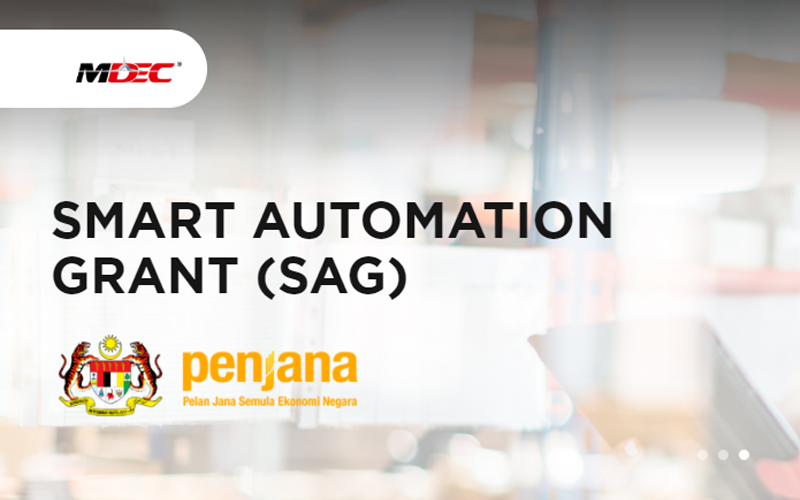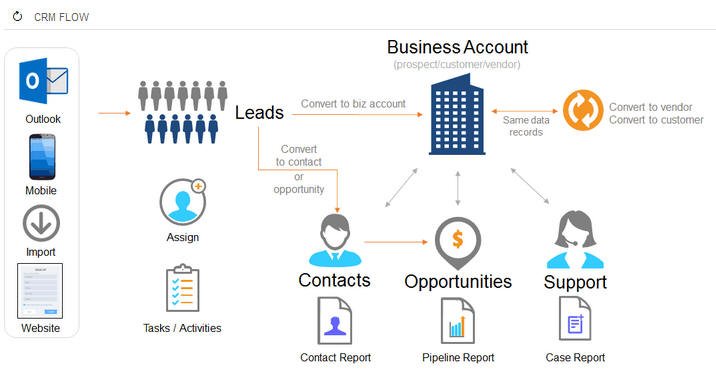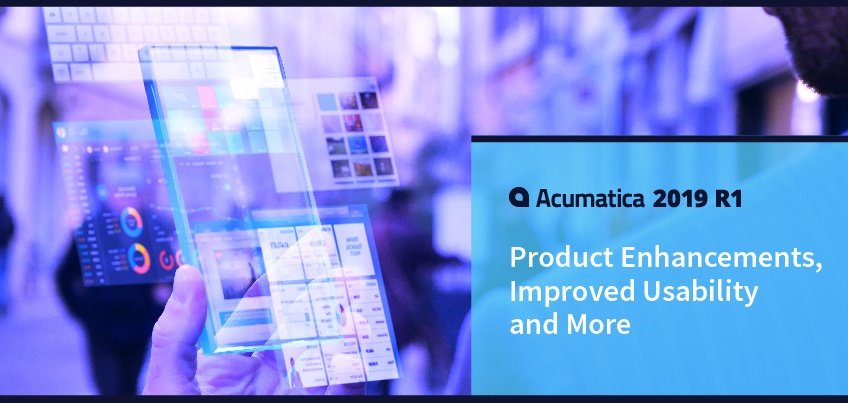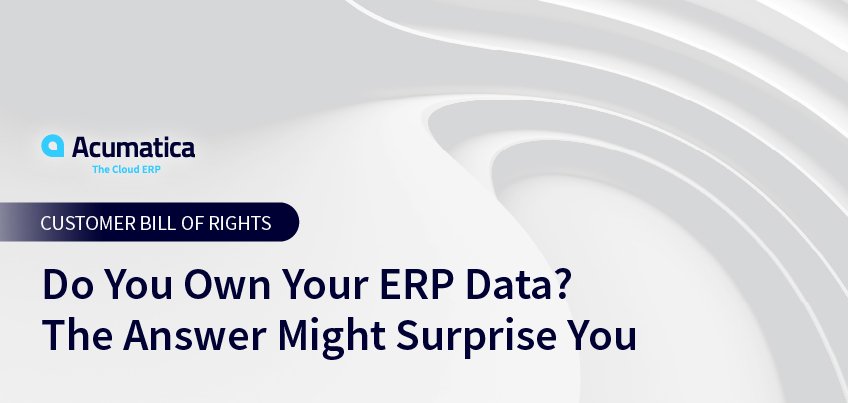Are your business and team members struggling to adjust to the new normal at the present COVID-19 pandemic hit? Or, are you facing many challenges from economic, upheaval, financial instability, and other events? Well, it isn’t easy to keep your virtual door open during tough times. In such cases, businesses need to re-think their financial and asset management, make changes to their supply chain, and redefine their overall strategy. While most companies still rely on video conferencing platforms, that being said, Cloud ERP (Enterprise Resource Planning) system is way more than this, extending businesses beyond the brick and mortar. In a crisis, ERP software plays a significant role in sustaining business continuity. When it comes to unexpected disaster recovery and planning across different industries, ERP integration will offer the right infrastructure that benefits now and prepare you for whatever the future holds. Let’s take an in-depth look at ERP capabilities that prove to be effective for organisations that don’t know how to maintain business continuity during sudden disasters. How Cloud ERP Works Beyond the Four Walls of the Brick and Mortar? When the unprecedented coronavirus outbreak first hit, many companies were striving to figure out how to maintain operational productivity in a virtual space while keeping the safety of employees in check. The next concern was to ensure team members could work remotely and the biggest question was, “How do companies align 2,000 people work remotely and make sure they can be efficient at the same time?” This has increased the people’s level of interest in the Cloud ERP system because of ‘accessible anywhere’ functionality, improves operational and financial productivity, regardless of industry, size, location, and operational method. Cloud-based ERP technology powers businesses globally, allowing them to run smoothly from anywhere, anytime. During tough times, companies are still serving clients and customers with efficiency, agility, and functionality right from the comfort of their homes. Proven ERP Strategies for Business Continuity and Disaster Recovery Whether the economy is rising or falling, there is no wrong time to implement an ERP solution as it assures business continuity in the scenario of a crisis. Businesses require a powerful platform for financial management, production runs, distribution, sales, inventory management, and more. This way, when disaster hits, you won’t be left unprepared instead, you will be evaluating assets and shaping a solid plan to cope up with the disaster. Cloud-based ERP acts as a fundamental seed that not only just focuses on survival but also serves the aim of organisations’ growth. It emphasises on making valuable decisions, such as: How do you structure your data across all departments? What type of reports and analysis do you really need to streamline business processes? What kind of analytics can help you to make better-informed decisions? It is extremely important to analyse your current market situation, see what’s happening with prospects and consumers, and make sure you have the right software like ERP in place so you won’t get stuck in the middle of a crisis. How Acumatica and Netsense are Helping Businesses to Maintain Business Continuity? At Netsense, we are working tirelessly to harness the power of the cloud, scalable technology, and cohesive to bring a powerful Acumatica ERP system to the table that drives operational efficiency, no matter wherever you go. It has the ability to streamline business processes, reduce risks, automate workflows, with a full-fledged Cloud ERP system. It will help all sizes and types of businesses to access vital information in real-time safely from anywhere, at any time, on any device. This advanced solution allows the workforce to work from anywhere and maintain business continuity during any crisis because they can run anything smoothly in the cloud. Acumatica ERP is all based on flexibility and growth, uses development languages, and standard web technologies to meet business needs. If you’re looking for a cloud-based solution to manage all facets of your business, you can never go wrong with our Acumatica ERP software. For any further queries or if you’d like to schedule a demonstration, connect with our experts today. The event of a crisis will ultimately come to an end, but you always need a well-connected team to reach your goals. Let us take your business to its next stage of growth with our one-in-all ERP solution.
The e-commerce market has been drastically transformed in terms of functionality and the way they operate as online businesses nurture, and brick-and-motor retailers seem less prominent. In a fierce competition, operators need to adopt new mediums to ease their operations and stand out from the crowd. The e-commerce business holders can only thrive when they focus on streamlining processes, reducing expenses, maintaining supply efficiencies, and discovering new ways to build customer relations. Enterprise Resource Planning (ERP) system integrated with online sales provides game-changing opportunities, saves time, and drives consistency which adds more value to your business. With the successful front to back flow of business operations, operators can access necessary information such as customer profiles, sales order, stock availability, pricing, deliveries, and other financial analysis seamlessly. In this post, we will look further into some benefits of ERP e-commerce integration, how enabling ERP functionality will play a significant role in the future, and which could be the best solution for you. So let’s get started! How ERP E-Commerce Integration Can Benefit Your Online Business?Since e-commerce market leaders need to perform tasks quickly and at a large volume, they cannot ignore the absolute need for a dedicated system equipped with automation capabilities and real-time updates to achieve success. Here are some great possibilities e-commerce businesses can expect with ERP software: Improved ProductivityERP software has the power to increase operational productivity by uniting several workflows and automating the flow of information. You can automate functions like delivering shipping notification and bank reconciliation, which results in fewer delays, less wasted resources, and fewer human errors. Centralisation of Sales InformationIt could be a daunting task to keep sales information organised, especially when it flows from different departments. One of the main advantages of ERP integration is that it can consolidate information from multiple locations such as brick and motor stores, catalogs, online, etc. through automation capabilities that make insight development more efficient. Generate RevenueEvery business tends to look for innovative techniques to generate maximum revenue. ERP solution can help e-commerce businesses to earn better profitability pertaining to increased productivity, automation, and so on. A Nucleus Research found that the average amount of benefits that a business receives for every dollar spent on ERP software is $7.23. Thus, a successful ERP integration can drive revenue benefits that even exceeds the initial implementation costs. Strong Customer RelationshipsMany ERP system comes with Customer Relationship Management (CRM) functionality which can offer customers’ information based on demographics, past sales, orders, sales leads, etc. You can also automate the process of monitoring shipments and sending notifications when a product has been delivered to its intended location. By simplifying these processes, you can attract more customers, make a good impression, and increase customer retention rate. Will ERP System Continue to be Important for E-Commerce Businesses in the Future?Well, the short answer is definitely yes. A study from the United States Commerce Department reveals that the total market share of online retail sales in February 2019 was more than the general merchandise for the first time ever. This translates to more people are adopting online solutions to purchase items and certain offers will never fail to impress. Today, there are still a lot of middle-ware solutions that step back and forth between systems, but as ERP system changes and starts to incorporate modern technology, operators can easily exchange and manage data in real-time with more accuracy. How Acumatica ERP System Ensures Your Business Continuity and Productivity?Acumatica ERP System combines all the important components for best-in-class multichannel fulfilment, including inventory management, shipping, packaging, returns, customer support, and accounting under a single database. This is a full-fledged solution to optimise your stock levels, automate your business processes, and gain a single source of truth to accelerate your business efficiency. It offers a centralised view of your business, where operators can attain real-time information of orders, inventory, and profitability based on product and location. It also involves unique capabilities in its system and CRM modules make an optimum addition to any e-commerce solution. Finding the right ERP system is extremely important to reduce the risk of errors and deliver high performing results to enhance your customers’ experience. This is why, at Netsense, we offer advanced Acumatica ERP solution that streamlines your business processes and takes your company’s growth to the next level. You can also schedule a consultation with us and see Acumatica ERP in action to make a better-informed decision. Feel free to reach out to us for further assistance.
The advancement in the usage of Artificial Intelligence (AI) within the enterprise system ecosystem has always created a buzz among industries across the world. Artificial intelligence and machine learning are showing excellence in optimising operational models and managing business operations with ease and accuracy. In fact, Gartner predictions reveal that by 2021, 80% of emerging technologies will utilise artificial intelligence as a key component. Since this technology is going to become highly prevalent in the coming years, it is a viable option to optimise your ERP (Enterprise Resource Planning) system for fast-forward AI to gain a competitive edge over others. AI in ERP software offers real-time data insights, allowing companies to enhance their operational efficiency, maximise ROI, and reduce overall costs. Impact of Artificial Intelligence (AI) on ERP System AI-powered ERP systems can positively affect the core operations of an organisation by streamlining everyday operations, reducing operational expenses, and eradicating human errors. It allows users to attain actionable data insights, superior access, financial controls, and smart production management. A technologically advanced ERP system assists companies in discovering and leveraging massive volumes of structured data, eliminating errors, and complex business challenges. ERP systems with AI can automate routine activities and identify patterns which gives organisations an unparalleled efficiency and functionality. Having a clear picture of your customers’ operational data, you can easily unlock the real potential of your data and manage your mundane tasks diligently. Three Areas that Can Be Managed Well with AI-Powered ERP System Data Management and Business Intelligence Leveraging your data to make rational decisions could add more value to your business. Industries like manufacturing can access real-time data, regular production updates, and customisable reports, at any given time to solve their toughest business problems and streamline decision-making processes.AI and machine learning can transform the way how ERP handles and optimises data. For instance, AI can evaluate the purchasing behaviour of different clients, allowing you to alter your inventories directly to meet the needs of customers. AI can also deliver historical data and behavioural patterns which can help you to create an accurate quote for your consumers. Automating Business Processes Routine tasks like month-end closing and invoice can consume hours or even days to complete, which may lead to delays and wasted resources. The ERP system can assist operators with scheduling, accounting, process automation, and inventory management, allowing the workforce to focus more on core objectives to achieve goals faster.AI technology can strengthen your ERP system’s performance, giving the ability to learn and make smart decisions, align routine tasks such as payroll administration and accounting effortlessly. AI-enabled ERP software detects the wasteful process and recommends a solution to minimise wasted resources, cut down the cost, and enhance efficiency. User Experience Some businesses may find ERPs complex and intimidating, especially when they are learning it right from scratch. In such scenarios, AI technology integrated into the ERP system proved to be very helpful in decision-making based on human input, which handles both structured and unstructured data and then delivers it in a clear and user-friendly manner. While ERP systems have effectively integrated different business aspects, artificial intelligence has created a channel for analysing a large amount of data, making useful predictions, and suggesting further steps for the smart decision-making process. As AI technology matures rapidly, now is the right time to opt for an AI-powered ERP system to enhance operational efficiency and user experience.
Should you go with an On-Premise ERP or a Cloud one? This is one complexity that all small businesses face in the initial stages of platform set-up. Reporting, analytics, automation, AI integration and all such aspects are to be integrated unified for increased efficiency and organizational process management. All these could be effectively managed when you have a strong Enterprise Resource System (ERP) platform. But picking what medium is a bog question, especially when you are new to this. Would a cloud based one offer more detailed and accurate analytics than an on-premise one? Which one would provide faster reporting? Which would help you in getting quick insights? Cloud ERP – Is it Better Than On-Premise? If you consult a professional ERP solution service provider, and considering the changing business market, scalability expectation, it is safe to assume that the cloud option is gaining more popularity and adoption. Not assured? Don’t worry. Cloud ERP is highly convenient and modern way for small and mid-size SMEs to incorporate in their flexible business culture. But how? Read on to know: Low Upfront Cost The most concerned issue for small businesses and start-ups are the added IT infrastructural costs, which they are looking to avoid, but don’t want to compromise on the tool’s capability and high-end solutions. Going the cloud way provides the best solution for them.As the cloud based ERP is hosted by the vendor, small business owners are saved from the complexity of infrastructural aspect. You can choose the monthly payment or annual subscription mode. It provides high scalability, less maintenance cost, and easy configuration. High Scalability for Future Your business structure, your client base, your market needs, customer demands and in core your business process won’t remain the same. So you are going to get your IT to change and adapt according to that. This is where we all look forward to a scalable solution that can grow with respect to the changing environment. This is rendered excellently by the cloud based solution, whereas with an on-premise platform you need to go for a complete overhaul. Easy and Quick Deployment You have a lot on your table right now, and can’t commit to stressful and time-consuming IT deployment. Worry not. Cloud based ERPs function over the internet and this is a basic infrastructural need all you have to arrange for. Improved Flexibility Today we look at technology and tools which can not only enable the business capacity to run at its full efficiency but also need the need of tomorrow’s expansion. We live and work in an environment today where we want a technological aspect to not just cover one basic, but be able to fulfil multi-facets. This efficient model helps drive future growth, easy adaption of mew resources into the system. Higher Mobility A workplace isn’t just your office desk. It can be the living room of your home, a café, your tablet or smartphone. You want to be connected to all the specific points of your business at all times from anywhere. Cloud based ERP makes this a breeze for you. High Data Security It has been observed over the years that with strengthened internet policies, improved network architecture, and focus on cloud as the business enabler, we have ERP platforms with remote access that provides enhanced data security.Cloud based technological architecture has come a long way, and it is not something to fear anymore. As small business owners have a lot to ponder over and limited budget, leveraging the cloud benefits will prove not missing out on the technological capability all the while making it simplified and resourceful. You can adopt Acumatica ERP implemented that helps you get the best from a resourceful solution while also making best use of streamlined and cohesive online process.
How Enterprise Development Grant (EDG) Can Supercharge Singaporean Companies During Recession? Now more than ever, companies that foster are the ones that have well-connected teams, powerful business strategies, think innovatively, adapt the latest technology and reach the audience globally. This is where Enterprise Development Grant (EDG) comes to the rescue, a program offered by Enterprise Singapore (ES) to support companies in the journey of becoming successful. The EDG provides all-inclusive support to businesses who wish to thrive, innovate, venture overseas, or are set to go on board on any combination of these tactics. Since unprecedented coronavirus pandemic has adversely affected many sectors, recently, the maximum support level of EDG has been increased by up to 90% which means Singaporean SMEs can gain up to 90% government grants to meet the expenses of qualifying projects. Still, wondering what exactly is Enterprise Development Grant (EDG)? How it can assist with companies’ expansion? Read on to attain a clear understanding. What is the Enterprise Development Grant (EDG)? The Enterprise Development Grant (EDG) is a program managed by Enterprise Singapore (ES) to help Small and Medium Enterprises (SMEs) in Singapore to create a strong business foundation, use advanced practices, and boost productivity, by offering them financial grants. It is created by combining two previous grants i.e. the Capability Development Grant (CDG) and the Global Company Partnership (GCP). The original EDG defrays up to 30% to 70% of qualifying project expenses, vary depending on whether it is a Small Medium Enterprise (SME) or finances are required for software and equipment. However, to lessen the negative impact on companies due to the COVID-19 outbreak, the Enterprise Singapore (ES) has announced that the subsidy will meet up to 80% of the costs depending on cases that will remain valid until December 31, 2020. And those companies who have shattered by the novel coronavirus will qualify for 90% grant support. The Three Core Pillars of Enterprise Development Grant (EDG) The grant gives optimum support to projects that help companies to strengthen their business foundations and improve efficiency under the three pillars, that include: 1. Core Capabilities Project under the category of Core Capabilities support companies for increased growth by strengthening and stabilising their business foundations. The projects basically involve: Business Strategy Development Building a new set of business strategies that bring better opportunities and give a competitive edge over others. Enhance research and development activities. Improve management systems with the Business Excellence Framework to obtain the ‘Singapore Quality Class’ certification. Financial Management The purpose here is to analyse companies’ financial stability to facilitate corporate growth and prepare their management teams with the necessary skills. The projects include: Developing proven strategies to drive profitable investments. Risk exposure evaluation and use of risk management procedure. Human Capital Development The aim here is to improve Human Resource (HR) capabilities of companies to make the best out of business expansion tactics. The projects include: Reshaping Human Resource (HR) management. Offering compensation and benefits. Assisting with the skill development of the workforce. Service Excellence The objective here is to enhance the delivery services of companies by attaining a clear knowledge of consumers’ needs, behaviour, and decision-making procedures. The projects include: Evaluation of customers’ requirements and decision-making strategies. Applying genuine service delivery tactics to enhance the customer experience. Strategic Brand and Marketing Development It serves the purpose of helping companies to attract the potential target audience and various markets more effectively by distinguishing between brands, products/ or services. The projects cover: Development of impeccable brand strategies focused on a unique selling perspective to reach customers. Advancement of business marketing and communication plans. 2. Innovation and Productivity Projects under the category of Innovation and Production allow companies to discover diverse areas of expansion or seek strategies to boost efficiency. This can cover examination and reshaping workflows and procedures. Companies can also use automation and technology to ease their everyday tasks. The projects involve: Automation Companies can opt for automation tools like ERP software to simplify their business processes, create daily operations more productive, and attain real-time insights into their businesses with a constant focus on growth. Process Redesign Before taking advantage of automation, companies are advised to optimise their existing business procedures and determine certain areas to enhance productivity. Product Development Companies are motivated to innovate and renovate themselves to develop efficient products for commercial usage. 3. Market Access Projects under the category of Market Access support Singapore companies that are willing and prepared to expand overseas. In such cases, companies can utilise Enterprise Development Grant (EDG) to help cover some of the costs of thriving into overseas markets. The projects involve: Mergers and Acquisitions (M&A) This may be in the planning, assessment of potential mergers and/or acquisition or post-M&A staThis covers planning, evaluation of possible mergers and acquisitions, or post-M&A stage integration. Overseas Marketing Presence (OMP) The main is to support companies to grow into new markets by establishing a presence overseas to begin marketing and business development operations. Pilot Project and Test Bedding The goal is to support companies to grow into new geographical or product markets by setting their track records. Standards Adoption The purpose is to support companies to adopt internationally-claimed standards and certifications in respected industries, as well as new and developing sectors. How EDG is Different from CDG and GCP? Previously, the Capability Development Grant (CDG) offered by SPRING Singapore was designed to support companies in capability development. On the other hand, the Global Company Partnership (GCP) grant offered by International Enterprise Singapore (IE) was established to help companies reach overseas. The Enterprise Development Grant (EDG) is a single grant that offers complete help to companies who want to upgrade, strengthen their goals, and venture overseas. As we have discussed, the supported projects meet a wide scope under three main pillars – Core Capabilities, Innovation and Productivity, and Market Access. Who is Eligible to Apply for the EDG? Companies with the strong financial background are certainly eligible to apply for the Enterprise Development Grant (EDG), however, they are required to meet
The Malaysia Digital Economy Corporation (MDEC) announced the Smart Automation Grant (SAG) under Pelan Jana Semula Ekonomi Negara (PENJANA) initiative, which is primarily intended to support companies in order to make a digital jump and to recover from the impact of unprecedented coronavirus pandemic. This way, Small and Medium Enterprises (SMEs) can leap into the digital path and grow their digital capabilities to contribute more to the innovation and economy. According to IDC’s infographic, SMBs with legacy systems need to realise the peace of mind cloud Enterprise Resource Planning (ERP) offers and start planning to embrace digital transformation. Since SAG will be used solely to develop and implement a project that increases the adoption of technologies to automate business tasks, acquiring advanced ERP solution could be a feasible option to manage your company’s data and processes under a single database, no matter wherever you are. WHAT IS THE SAG? SAG stands for Smart Automation Grant, a plan of PENJANA which is a specific matching grant for services companies that will allow them to automate their business processes and step ahead in the sphere of digitalisation. Under this grant, each successful application will get up to 50% of the total project cost, pertaining to a ceiling limit up to RM200,000 or, whichever is the lowest. This matching grant currently focuses on the service industry, including transportation, retail, wholesale, food and beverages, logistics, healthcare, real estate, financial services, and much more. It is aimed at assisting services companies embarking on automation to accomplish an increase in revenue, reduction of the process time cycle, reduce human errors, significant savings in business cost, and bring new opportunities for growth. To be eligible for SAG, the companies must meet the following criteria: Incorporated in Malaysia under the Companies Act 1965 and the Companies Act 2016. Have an issued and paid-up capital of at least RM50,000. Have a minimum of 51% equity held by Malaysian(s). Should not be a subject of liquidation, winding up or bankruptcy order. Have no ongoing issue or dormant. Have entered into a written contract or committed plan with the technology partner for the expansion and execution of the project. If received any MDEC/government grant in the past, the applicant needs to demonstrate the completion and success of the funded project(s). How SMEs can Shift to Digital Transformation through Acumatica ERP Software? Many Small and Medium Enterprises (SMEs) still uses an on-premise system which lacks in terms of flexibility, performance, and functionality. Such systems require manual input and experience complications in synchronising data. SMBs can use the Acumatica ERP system to embrace digital transformation and increase their chances of success. Acumatica ERP software is designed on a cloud-based solution that allows users to control and monitor business information smoothly and effectively from anywhere, anytime. A highly functional ERP system allow users to manage all facets of business such as accounting, production runs, distribution, finance, inventory management, projects, scheduling, order modifications, and so on. It eradicates extensive paperwork and seamlessly provides updates regarding sales, services, orders, and other areas with visibility into your requisition process. Acumatica Cloud ERP can drive valuable customer relations and growth in a range of industries such as manufacturing, service industries, construction, retail and e-commerce, distribution, and more. With high flexibility, regular product updates, and multiple data storage locations, companies can manage workflows seamlessly and give the best shot at success. Is it a Viable Option to Use SAG for Acumatica ERP Software Purchase?Businesses and communities looking for reliable support within the digital space should take PENJANA SAG as an opportunity and purchase the Acumatica ERP system to deliver data across organisation and manage workflows automatically. Irrespective of the background and nature of the business, everyone can be a leading part of the digital ecosystem through an ERP solution and can recover from complex business situations. It gives an intelligent core to connect both internal and external resources under a single database to thrive in the digital era. This will give your business a much-needed boost to regain lifestyle, excel at the present, and look confidently to the future.
We live in a new era where companies need to be flexible, well-connected, and agile to accomplish ultimate success. You can manage and monitor business processes and customer relations with the Acumatica cloud ERP system with its cross-module workflow capabilities. The advanced Workflow Editor delivered in Acumatica 2020R1 can perform all tasks with new customisations in the workflow editor. Organisations don’t need to rely on tedious, scattered spreadsheets, and manual status transitions anymore. With all-new Acumatica 2020R1, you can handle workflow as per precise business rules to transition the document from one position to another. You can simply modify the status of actions, place actions in the main toolbar to support users with what they should do further. You can also create multiple actions to change statuses without writing any code and changing other fields after the transition is finished. Capabilities of Workflow Editor in Acumatica 2020R1Acumatica’s 2020R1 is released with enhanced usability, best-in-class functionality, powerful new modules, has enriched cross-connected workflows, and offers additional codeless customisation capabilities. The user experience has significantly improved in the new release which allows running the entire business in one system more effectively. Cross-module workflow in cloud ERP can streamline the flow of information across all departments within the organisation, from anywhere at any time. The pain of not being able to accumulate useful information in real-time is eliminated, which drives flexibility, agility, and productivity. For instance, organisations who are using standalone systems rather can the ERP system may witness a slowdown in their processes and are restricted to cross-selling. This complete ERP solution can minimise the complexity of operations and offer quality service to the customers. The order placements will automatically reflect in the inventory and replenishment workflow notes the low inventory to ensure the availability of inventory for future orders. It has begun to take its place across all industries, including e-commerce, manufacturing, construction, supply chain, healthcare, and so on. How Acumatica ERP Can Help Companies Drive Efficiencies and Resilience?Whatever the kind of business you’re engaged in, at the end of the day, your success hinges on how well you are connected with customers and their overall experience. If you are trying hard to drive productivity with multiple systems but teams still aren’t connected with each other, you definitely need full-fledged cloud-based Acumatica ERP solution. This platform is built with connected modules to facilitate construction, distribution, field service, manufacturing, and general. Every engagement with the consumer, new opportunities, placed orders, renewals, and inventory status can be created in the support system under one database. All modules use the same database, have the same appearance, and allow users to access information at anytime from anywhere through one single solution. Key Features of Workflow Editor in Acumatica 2020R1 Use Artificial Intelligence (AI) and machine learning to simplify experience Enhance performance with new dashboard caching settings Access to data entry screens faster with a quick add button Monitor production and costs with native shop floor data collection Advanced planning features to predict future scenarios Handle complex construction projects with improved project management tools Simplify project balance reconciliation Track project development with improved daily field reports Develop reports, modify workflows, and add user-defined fields Automate business processes with new workflow engine for CRM Improved lead qualification and contact management How Netsense Can Help Improve Your Business Functionality?It is a new world where success relies on vital data via cross-module workflow capabilities and monitoring customers’ leads and relations – something Acumatica ERP solution can help you do in the best possible manner. Many of the companies realised that Acumatica was the system they always wanted to use to expand their company wisely with no need to depend on anything else. At Netsense, we offer an advanced Acumatica ERP system that can handle all your business processes within one system. You can schedule a free demonstration with us and see cloud-based ERP in action to make a rational decision. We assure you that you will be amazed to find world-class functionality and support in one system. Feel free to reach out to us for further queries and assistance. We’d be glad to assist you!
Acumatica released 2020 R1 in late March, revealed a multitude of new product features such as improvement in the usability, introduce power-packed new modules, best-in-class functionality, cross-connected processes, and codeless customisation. “2020 R1 is a significant product release,” said Jon Roskill, CEO, Acumatica. “We have to pause sometimes and marvel at the pace of innovation consistently delivered by our product team. Acumatica customers and partners keep clamouring for more and they get it, twice a year, with real quality.” Acumatica 2020 R1 put some light on the fact that the company is highly dedicated to developing new technologies into Acumatica product while focusing on superior user experience. The version is built on a future-centric platform with an open architecture for fast integrations, scalability, and ease of use, delivering unmatched value to small and medium-sized enterprises (SMEs). Exciting New Features in Acumatica 2020 R1 1. All-New Experience with Superior UsabilityUses Artificial Intelligence (AI) and machine learning to streamline user experience: Utilise mobile camera to make expense receipts quickly Give access to data entry screens fast with a quick add button New mobile capabilities: Record travel and break time while on service calls Enables to attach images directly to data records Ease of Reporting: Enhance performance with dashboard caching settings Give pivot table percentages calculations and individual counts 2. Eradicate Business Silos with Brand-New Native ModulesThe company understands the real complications of running a business on dissimilar systems. This is why, the experts strive to deliver robust, new native modules in 2020 R1 to allow running the whole business on one system. Take over markets with Omnichannel Commerce: Ecommerce powered business management through BigCommerce integration Allows users to automate B2B and B2C with omnichannel sales and implementation with unified back-end accounting Reduce overhead expenses and keep employees satisfied with in-house payroll: Decrease overhead expenses with Acumatica Payroll 3. Faster Growth with Best-in-Class FunctionalityIn 2020 R1, you will discover new features and enhancements in all industry editions. Acumatica ERP is designed for mid-market business expansion and offers best-in-class functionality by integrating core functions into a single business-wide software suite. Key Features for Distribution CompaniesIncrease sales and speed warehouse operations: Matrix inventory generates, tracks, and handle related products quickly. WMS involve wave and batch picking for faster implementation Key Features for Manufacturing CompaniesEnhance manufacturing operations: Monitor production and costs with native shop floor data collection Advanced planning features capable-to-promise and what-if situations Key Features for Construction CompaniesHandle more construction projects with enhanced project management tools: Streamlined project balance reconciliation Monitor project development with enhanced daily field reports including weather and photo logs Manage payments and retainage by lines in AR Key Features for International Companies International depreciation improvements support worldwide expansion 4. Tailored to your Business without Writing CodeUse online tools to create reports, alter workflows, add user-defined fields, and more without writing any code. Features include: Fast and easy data imports Modify tab orders and visibility Dynamically present field valid values Automate business workflows with a powerful, new workflow engine for CRM Add side panels to data screens to speed data entry 5. Boost Businesses with Cross-Connected WorkflowsWith the Acumatica cloud-based ERP solution, you can build end-to-end workflows, enhance productivity, and eventually strengthen your business. Features include: Enhanced lead qualification and contact management links sales with production Improved project billing based on field service activities How We Can Help?Following the recent announcements and capabilities of 2020 R1, at Netsense, we strive to explore emerging technologies and put all-in-one Acumatica ERP system to the front that ensures to drive operational efficiency and automation in your organisation. We assure you that our enterprise management solution will definitely transform the way you operate and help you thrive in a new digital world. If you’d like to discover Acumatica ERP capabilities on your own, schedule a demonstration with us today and make a smart decision to accomplish ultimate success. Don’t hesitate to contact us.
Our latest release, Acumatica 2019 R1, provides comprehensive product enhancements. Users will experience improvements to our financial management software, inventory management software, project accounting, and field service management software. Every application module of Acumatica’s cloud ERP solution has been enhanced in some way in Acumatica 2019 R1. Today, we’ll provide examples of the improvements in this new release, which were also presented at Acumatica Summit 2019 in Houston. For current customers and partners, the full set of Release Notes are available on the Acumatica Portal and a full recap of the Summit is posted. Improving application functionality and cross-connected workflows During Day Two of Acumatica Summit 2019, Acumatica CEO Jon Roskill said, “We love technology, but it’s not technology for technology’s sake. It’s technology and how we can apply it to very pragmatic problems in the real world.” This is apparent when you look at the improved functionality and cross-connected workflows that Acumatica 2019 R1 brings to the table. Below are some of these specific improvements broken down by module: Financial management Predefined list of currencies: Acumatica cloud ERP now provides a predefined list of all currencies included in the ISO 4217 standard. Financial management software users no longer need to manually enter the world currencies and their basic settings. Different Start Periods for Companies in the same tenant: Companies using Financial Management and having multiple legal entities within the same tenant can now have different fiscal year-end dates. With this functionality, an organization can accelerate implementation; simplify maintenance for companies that share vendors, stock items, and employees; run consolidated operational reports at any time; and facilitate the preparation of consolidated financial statements. Order management and Inventory Automated Warehouse Operations (WMS): Clients with medium or large warehouses typically use external inventory management software or WMS (warehouse management system) solutions for supporting standard warehouse operations with inventory items, such as picking, packaging, PO receiving, putting away, transferring, and physical counting by using barcode scanners (or mobile devices with a scanning option). Ship-to info: Multiple shipments or orders with different addresses are included in the Sales Order invoice. Project Accounting Multi-currency project accounting: Users can enter project transactions in different currencies and maintain projects in both the base currency and the project currency. With multi-currency project accounting, project managers and accountants can review actual revenues, actual costs, and committed costs in the project currency, with an ability to calculate project profitability in both the project currency and the base currency, and present costs to the customer in the customer’s currency. Project budget forecast by period: Enter and modify project budget forecasts and compare these forecasts with the actual project costs and incomes for each financial period. Users can forecast original and revised budget amounts and quantities for existing project budget lines for financial periods of the master calendar. Each project can have multiple budget forecast revisions. In a forecast revision, a user can distribute amounts and quantities of the project budget among the selected range of financial periods to speed data entry. By using forecast data, users can create generic inquiries and pivot tables. Company-Specific Financial Periods in Project Accounting: Companies using project accounting within the same tenant can have different fiscal year-end dates with this functionality. This is important for companies that share vendors, stock items, and employees. The company-specific periods are defined at the branch level. Field Services Calendar boards: With field service management software, customize the calendar board by rotating the members vs time axis. Users can change the time range to show schedules for one week or one month. The user now can also reassign an appointment from one staff member to another on a different date, viewing the agenda for a group of staff members on a particular week or month, or viewing the availability of rooms on a particular week or month. Location Tracking: Using mobile device of the service personnel, the GPS location of any location can be tracked. Generate Invoice: From the Field Service application, the service personnel can now directly generate an invoice from a service order or an appointment. Consistently improving platform usability Our applications continue to grow in functionality, are designed to transparently work together across module boundaries, and are easy to use because of our xRP platform. In every release, we improve the underlying system to improve our customers’ experience. Following are the enhancements Acumatica 2019 R1 brought to Acumatica’s cloud ERP platform. Custom color for User Interface: Ability to personalize the primary color of the company’s user interface. In addition, for multi-company or multi-branches, a different color can be specified for branch to make it easier for employees to distinguish these branches. Highlighting results in Inquiries: An option to highlight rows or columns of a generic inquiry based on conditions has been introduced. Base on the condition or formula, the system will highlight certain elements of a generic inquiry. For example, when inquiring on “opportunities”, the resulting grid can show those opportunities that have been won in green, those that have no owner can be yellow, and opportunities that are late can be red. Generic Inquiry Side Panel: The user can view the details of a row on the inquiry screen in the side panel. For sales orders, for instance, this could be the customer’s company information. Changes to the data can be made in the side panel and the information displayed can be data or dashboard graphics. In addition, fhe following improvements have been made to the side panel of generic inquiries: ability to resize the side panel and the new size saved automatically, a button has been added to maximize or minimize this panel, and side panel elements have been optimized to use window space more effectively. Improved help search via ML: In this release, Acumatica is using Machine Learning (ML) in the HELP text. Based on how effective the response to a natural language search has been, the system knows if it is serving up the correct results and adjusts. Link existing files to Acumatica entities: The ability to easily add links to the attachments that already exist in the system has been introduced. The user can add a link to the stored files right from the form
With the increasing demand for enterprise management solutions, it seems quite logical that you would own your ERP data. However, some companies are inclined towards cloud ERP vendors and in most cases, vendors own the data rather than you and your company. Isn’t it unfair? It is surprising to come across that your vendors’ SaaS End-User License Agreement (EULA) that provides you with the right to access their software doesn’t certainly give you ownership of your ERP data. Well, this is never a matter of concern with Acumatica ERP system. Users can simply take a data snapshot and save it in an imported database format, after all, it is their data. In this guide, we will discuss consequences that may fall if you don’t own your data and how Acumatica ERP ensures your complete data ownership from start to finish. Without further ado, let’s get started! What happens if You’re Lacking Data Ownership? Lack of PrivacyAs the data you store into your ERP system is obviously yours, it is easy to assume that you have ownership as well. But this is where you should carefully read the fine print because this isn’t the scenario, more often. A vendors’ End-User License Agreement (EULA) only gives the right to use their system but usually doesn’t offer data ownership. In fact, the case is just the opposite. Since the software vendor owns the data, they also have access to your data which they can use, read, and even harm the confidentiality of your private data. Difficult to Access Your DataFor instance, if you don’t own your data, it could become even more complicated to access it. This can adversely affect your company’s formation and decision-making process. A bigger challenge can occur if you decide to change vendors as they won’t let you go that easily. They can convince you to return your data even when it is an unusable format, inaccurate, temporarily ‘losing’ data, or hacked. How Acumatica ERP Gives Complete Data Ownership to Customers?Things in the case of data ownership work quite differently with Acumatica ERP. The company believes you should own what’s ethically yours. Using this system never means they have ownership of your data. Your data is owned by you and your company right from the beginning, written in Acumatica’s Bill of Rights. As we have discussed above, Acumatica ERP users can take a data snapshot and save it locally in an imported database format. This means you can have easy and quick access to your data and you don’t need to depend on vendors or someone else to attain access to the information you need. Another issue that needs to be addressed is your customers’ data. For instance, in the era of Artificial Intelligence (AI) and Machine Learning (ML), do you know who owns the right to your customers’ data? Well, some vendors might be gathering and using your combined data without your permission or knowledge for their own benefit. But again, it has never been a concern for Acumatica ERP users. Acumatica Cloud ERP System – Own Your Data, Access it Anywhere at AnytimeEvery organisation wants an easily customised and seamless solution that can be integrated with third-party applications and has data-analysis capabilities for the faster decision-making process. At Netsense, we offer the Acumatica ERP system that allows you to own and access your data anytime. You will be given complete ownership and power over your data right from the start. We understand that quick access to the company’s information is essential to make better-informed decisions and create a well-connected business. Feel free to reach out to us today to know more about the data ownership rights of Acumatica ERP customers and to schedule a free demonstration with our experts to see its superior usability and best-in-class functionality in action. We’d love to give you valuable assistance and support.
